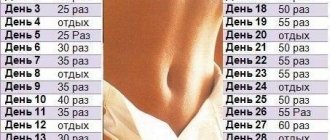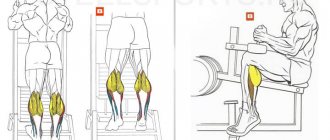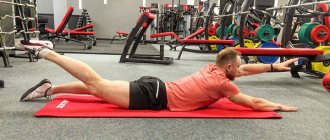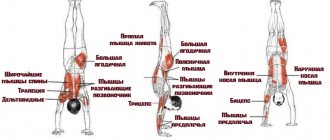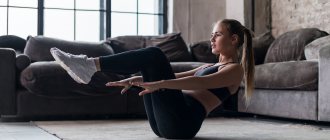If you still think that the most untrained muscles are the leg muscles, I recommend that you think again! I have not yet met people who, when coming to the gym, would specifically work on their neck muscles , which allows them to take first place, among the most untrained . Very few people have heard that these muscles can be trained, and if you suddenly meet such people by chance, you involuntarily want to ask: “ What are these guys doing? " The above indicates that these muscles are as important as any other, and a small neck in relation to the rest of the body will look simply disproportionate. What's the point of having huge shoulders and a toned body if you then look up and see a neck as thin as a pencil?
The neck is a part of the body that is always on display, so having a toned neck means having power, setting goals and achieving them. The most prominent muscle, but it is often forgotten. Would you like to look like these guys in the photo:
Or like this guy:
The choice is yours, but first, let's look at the anatomical structure of the neck.
Anatomy and function of the neck muscles
The neck consists of many muscles, forming three large groups - deep, median and superficial. Obviously, these muscles are involved in turning and tilting the head, and also keep it in an upright position. In addition, they are involved in the processes of swallowing, breathing and pronouncing sounds. For example, the scalene muscle of the neck raises the ribs when inhaling, and the digastric muscle is involved in chewing food and swallowing.
What muscles are involved in the exercises?
The neck muscles are indirectly involved in training aimed at working the back and shoulders. But you can achieve neck development faster by performing exercises aimed at specific muscles:
- trapezoidal;
- sternocleidomastoid;
- hyoid bone: digastric, maxillary-hyoid, stylohyoid, sternohyoid, scapular-hyoid, sternothyroid, thyrohyoid, geniohyoid.
These muscles are used in neck exercises
The importance of neck muscle training
A strong male neck is the beauty and health of its owner. The aesthetic function of pumped-up neck muscles is indisputable, because with a developed chest, broad shoulders and sculpted arms, they should look trained. If athletes striving for high results have a question about why they should pump their necks, they just need to look at the photos of titled bodybuilders. They will be an excellent confirmation of the need to include exercises for the neck muscles in the training process.
Women should also pay attention to this muscle group, because the open décolleté area is their prerogative. Of course, women's training should not include exercises with heavy weights, because in this case, the elegance of the outline is important, not the size of the muscles. If athletes are wondering whether girls need to shake their necks, it is worth remembering that this is the area that begins to age first of all. Trained neck muscles will help you avoid sagging skin and a double chin, and therefore generally improve your appearance. By paying attention to this area, girls not only improve their décolleté area, but also prolong its youth.
Who needs a neck shake?
For beginners
The neck muscles help a person perform a huge number of movements. You can look in different directions, lie in a comfortable position, and also maintain the correct head position. Regular exercises will help eliminate several significant problems. You can correct curvatures in the cervical spine, protect yourself from osteochondrosis and unpleasant pain. Work on pumping up the target muscle group if you often sit at the computer. Those with long and thin necks also need to exercise. Thus, the athlete will be able to visually tighten it.
For professional athletes
Many training programs of experienced bodybuilders do not contain exercises in their structure that would purposefully and quickly help pump up the neck. You can often see a visual imbalance in the development of certain muscle groups, even in a professional athlete. The athlete must focus on working out lagging muscles.
Boxers should also shake their necks. A well-developed cervical spine will help withstand serious blows to the head. Mixed martial arts fighters often work on this muscle group. And if it is better to train large muscle groups in a special gym, then you can do exercises for the neck at home. A competent training plan will help both beginners and professionals achieve the desired result at home.
Preparation for training
To pump up your neck muscles and avoid health problems, you need to start and end your workout with stretching and warming up. In addition, adequate load selection is important, as excessive weight or resistance can cause serious injury.
To warm up and prepare your muscles before training, just do a few simple exercises:
- Tilts and rotations of the head;
- Diagonal head tilts;
- Stretch to the sides, forward and backward using your arms.
It is enough to perform each exercise 10 times to prepare for further training. Bends and stretches should be done slowly, feeling the tension in the muscles and holding at the peak point for a few seconds.
Neck muscle training at home
- The bases of the inner parts of the palms rest against the chin. We tilt our head towards our chest, overcoming the resistance created by our hands. Then we also return our head to its original position (providing resistance with our hands). This training method is good because you can independently regulate the resistance force, increasing it with increasing training of the neck muscles.
- The palms are clasped and located at the back of the head. We tilt our head back, overcoming the resistance of our hands. After this, we tilt our head forward with our hands until our chin touches our chest, overcoming the resistance of the neck muscles.
- The palm of the right hand is located on the right cheek. We tilt our head to the right, overcoming the resistance of our hands.
- Similar to the previous exercise, but done to the left.
- The palm of the right hand rests on the chin. Straining the neck muscles and overcoming the force of the hand, we turn our head to the right. After this, we turn our head to the left using our hands, overcoming the resistance of the neck muscles.
- Similar to the previous one, but performed to the left.
Exercises for neck muscles without weights
Exercises without weights are quite simple to perform and do not require additional equipment. The main thing here is good stretching and caution, smooth movements. If you follow all the rules, you can effectively shake your neck at home. Since these exercises are performed without weight, they can be done for 15-20 repetitions. The main thing is that the load must be adequate, without overvoltage.
Place your chin on the base of your palms and pull it towards your chest, overcoming the resistance of your hands.
The principle of execution is the same, only the hands are clasped at the back of the head, and the head is pulled back.
The chin is held with the hand, and at this time the head is turned, overcoming resistance.
Place your weight on your head and your feet on your toes. Perform smooth rotational movements with your head in different directions. Advanced athletes can pick up additional weights.
Important: this exercise can have a bad effect on the cervical vertebrae. It is recommended only for advanced athletes, or for wrestlers.
For the next two exercises you will need the help of a partner.
Starting position – standing on all fours. The head in the forehead area is intercepted with a towel, the ends of which are held by a partner. Overcoming resistance, you need to pull your chin down towards your chest.
Get on all fours and ask your partner to hold their head with both hands. Overcoming the strength of the assistant’s hands, raise your head up. The resistance should not be too strong.
The described exercises are a worthy solution for those who are looking for a way to pump up their neck at home. After just 6-8 weeks, good training results will be visible - the neck muscles will become stronger and look much better.
Warm up for the neck
It is very important to stretch your neck thoroughly to avoid injuries, sprains and other crap.
Shaking your neck is harmful if you haven't warmed up. So ALWAYS stretch your neck before exercising.
Warm-up for the neck is stretching it in four directions.
First, do some static stretching. Tilt/turn your head in each direction and hold it in the most extended position for 3-4 seconds.
Then mobile stretching. Twist your head like you usually do in gym class.
Here is a video on how to stretch your neck:
Now let's move on to the exercises.
Precautions and contraindications
Exercises to strengthen the neck muscles are among the most traumatic, so their implementation must be careful, smooth and thoughtful. For beginners, it is better to enlist the support of an experienced trainer who will hone the technique and provide backup.
People with cervical osteochondrosis in the acute stage should not do neck exercises, especially with weights; for hypertension and tachycardia; for any infectious diseases.
Many athletes, wanting quick results, wonder whether it is possible to pump their neck every day. Experienced athletes believe that 5-6 short workouts per week, of medium intensity, have a much better effect on the neck muscles than 2-3 heavy ones.
If you experience severe pain, limited neck mobility, or a sharp jump in blood pressure, you should urgently stop training and consult a doctor.
Exercises with weights to develop the neck muscles
Athletes often train in combination with deltoids and trapezius. However, if at the end of the workout you perform several isolating elements (purely on the neck), the effect produced will double.
Raising the head from the “lying on your back” position. This type of exercise is best performed on a flat horizontal surface. The head, upper spine and shoulders should remain suspended. A weight plate from a barbell is placed on the center of the forehead, previously covered with a towel, and held in place with both hands. Exhale - the chin slowly reaches towards the chest, inhale - return to the starting position. 6-8 repetitions. This element will help those who are interested in how to pump up their neck at home (instead of iron, you can take any weight), because all tissues are being worked on. This exercise can be performed with dumbbells.
- Raising the head from the “lying on your stomach” position. Work on the same principle as in the previous exercise, only you need to lie on your stomach and hold the pancake with your hands on the back of your head. Exhale - the head stretches back, and so on for 6-8 repetitions.
- Traction with a strap. A special strap will help you quickly pump up your neck, the first side of which is thrown over the head, and the other is used to attach the load. The initial pose is the body bending forward to a right angle. Exhale - the head slowly lowers lower until the weight touches the floor, and after that the athlete returns to the starting position. Repeat 6-8 times.
A little anatomy
As you can see, the largest and most noticeable muscle in the neck is the sternocleidomastoid. She tilts her head forward and to the side. The scalene muscles also provide lateral tilt of the head. Tilt of the head back (extension of the neck) is given to us by the splenius muscle and the trapezius muscle.
By the way, about trapezoids. If you want to pump up a big neck, then you should not forget about them. This article explains in detail how to do this.
Thus, it is clear that to fully pump up the neck you need to perform 3 movements:
- Bend the neck forward (neck flexion),
- Bends back (neck extension),
- Lateral bends.
How to pump up your neck?
Any novice athlete who has decided to learn how to do pull-ups on a bar is probably familiar with a resistance band. But not all beginners know that this ordinary equipment is capable of solving the task of working out the muscles of the cervical spine. So, it's time to learn how to pump up your neck in a simple and very effective way.
It is recommended to attach the rubber band to any exercise equipment in the gym (for example, make a loop). The main thing here is to make sure that the resistance band is at head level. Then it’s a matter of technique - you need to place your head in a loop at forehead level, pull the tourniquet, creating a slight resistance and working with the neck muscles to tilt your head in the desired direction. Yes, at first it is difficult to perform the exercise, since due to the tilt of the head the resistance band constantly slips, however, there are already ready-made solutions to problems here. For example, you can place a regular towel between your head and the tourniquet.
Neck exercises
1. Flexion and extension of the neck while lying on a bench
These are the two simplest and most common exercises that do not require any equipment or skills. They are shown in the video below (watch from 2.00).
If you have never shaken your neck before, I advise you to take a 2.5 kg disk. Believe me, this is enough to get started. I will say again that the cervical vertebrae are quite mobile, and the neck muscles are very tender. Therefore, to begin with, you need to take less weight and do all movements smoothly and preferably in full amplitude. That is, bend and straighten your neck as much as possible.
It is better to alternate these two exercises with supersets. For beginners, 2 approaches (for each exercise) of 10-15 repetitions will be enough. By the way, instead of using a barbell disc, you can ask for help from a partner who will press on the back of your head or forehead.
2. Flexion and extension of the neck in a crossover
The essence is the same as the previous exercise and there is no fundamental difference. It’s just that instead of a disk or a partner, there is a weighted cable. How to do this is shown in the video below (watch from 4.00)
3. Flexion and extension of the neck, standing or sitting
To do this, you will need to make or buy a small device that fits on your head. The essence of this exercise is the same as the previous two. Absolutely nothing changes for the neck muscles. Only your posture changes. How to do this, watch the video (watch from 2.00).
Which of the three above exercises you will do is up to you to decide. Fundamentally, this does not solve anything. But if you can straighten your neck while sitting quite comfortably, then bending it like this is probably inconvenient. That is, you need to put this hat on backwards so that the weight is behind your back. Personally, I have never seen anyone do this.
Order an individual set of exercises from the author of this project - Timko Ilya
4. Lateral neck bends while lying down
It is done in the same way as lying flexion and extension, but only lying on your side. Both a barbell disc and a partner’s strong hand are suitable as weights. Some even manage to crush themselves with their hand or through a towel. The video below shows this exercise (watch from 3.50)
Ball exercise
Many athletes use this exercise option to get a good workout. You will need a sports ball. Make sure it is not hard. It must be clamped between the head and any vertical support.
The wall is not very suitable, because at first you will need to maintain balance. It is better to use one of the exercise machines in the gym.
Press your forehead into the ball. You should feel tension in your neck. The first few times we do the exercise easily, and then with effort. This way you can work out the lateral muscles of the neck well.
It is not necessary to devote an entire workout to this muscle group, but you can simply include these exercises in your regular routine.
The result will be a harmoniously developed body, which will indicate that you are working on yourself competently!
Basic principles for neck training
1. Always do neck exercises at the end of your workout. Then your body is as warm as possible. This means there is a lower risk of injury.
2. Always warm up your neck in a circular motion before exercising it.
3. All exercises should be done smoothly and without jerking. Remember that it is quite easy to displace cervical vertebrae and pinch a nerve.
4. When training your neck, do not forget about training your trapezius. Trapezius is the foundation for the neck. With large trapezoids, the neck looks much larger. If you are going to shake your neck today, then it makes sense to shake your trapezes in front of it.
5. The neck muscles are quite weak and intolerant. Therefore, for beginners, 2 sets of 10–15 repetitions will be enough to start with.
6. If you want to train your neck from all sides, but you need to do flexion, extension and lateral bending of the neck. Here's what a sample neck workout might look like for beginners:
- Monday: lying neck flexion + extension 2-3x10-15. Weight 2.5 – 5 kg.
- Friday: lying side neck bends 2-3x10-15. Weight 2.5 – 5 kg.
7. Do not do more than 2 workouts per week on your neck. Even if you have time to recover, there is no point in training it more often.
That's all I wanted to show you. I don't consider myself an expert on neck training, but I hope you learned at least something new. Good luck!
By the way, you can order yourself an individual set of exercises from Timko Ilya, the author of this article and this site.
Found an error in the article? Select it with the mouse and press Ctrl + Enter. And we will fix it!
Pumping up the neck muscles is not the most important task for a bodybuilder, but it is worth paying attention to. When an athlete has a powerful neck, this visually significantly increases the mass of the upper body. In addition, a well-toned neck significantly reduces the risk of injury to the cervical vertebrae, especially if you engage in contact sports. When performing barbell squats and deadlifts, a strong neck also increases the athlete's strength. But, as practice shows, people either don’t spend time on their necks at all, or do it incorrectly. In this article you will learn which exercises are most effective to use for developing neck muscles, which muscle group is best to combine its training with, and also which neck muscles should be given attention first.
Trapezius muscle - located in the back of the neck and occupies the upper part of the back, the muscle has a triangular shape, but both muscles, that is, the left and right sides form a trapezoid shape. The trapezius performs three functions: it brings the scapula to the spine, lifts the scapula up and lowers it down.
The scalene muscles are located at the back and are represented by three bundles: anterior, middle and posterior. The anterior scalene muscle of the neck is responsible for raising the upper rib during breathing. The middle scalene muscle, in addition to its anterior functions, can also rotate the cervical spine. The posterior scalene muscle performs the same functions as the medial muscle, but with a slightly different range of motion.
The splenius muscle is located on the side and is represented by two bundles that allow you to turn your head and neck to the side independently of each other. In addition, these muscles together extend the cervical spine.
Sternocleidomastoid muscle - consists of two heads, which begin at the mastoid cane and the lateral part of the superior nuchal line, and end at the sternoclavicular joint. The muscle allows you to throw your head back and tilt it to the side. In addition, this muscle is actively involved in breathing.
Workout 2
Deadlift
Perform the deadlift as technically as possible. This is the only way you will make your muscles work harmoniously and in tandem with each other. Which will have a positive effect on the load in general and on the load on the neck muscles in particular.
Swing forward with a kettlebell
An excellent exercise for the shoulder muscles, but, as you understand, the neck is not deprived of the load here. If your gym doesn’t have weights, you can perform this movement with dumbbells; they should definitely be there.
Hanging Leg Raise
If you cannot lift your legs straight, then do this exercise with your knees bent, it will be easier. If things are really bad, then do it lying on the floor
Lying Neck Curl
Lying on a bench, place a barbell disc on your forehead. Lie down with your head hanging off the bench. Choose the weight according to the strength of your neck. We raise our head powerfully and quickly, lower it under control and slowly, while making sure that only the neck is working.
Neck exercises
Shrugs are a very famous exercise that bodybuilders most often perform to train their necks. Shrugs are performed by lifting the shoulder girdle and collarbone upward by contracting the trapezius muscle. You can read more about the technique of performing shrugs here. We definitely recommend performing this exercise, even if you are not trying to purposefully pump up your neck. The trapezius muscle is the largest muscle group of the cervical region, so its hypertrophy is immediately noticeable, as a result of which it is the one that needs to be given special attention.
Flexion and extension can be done while sitting or lying down, both on your stomach and on your back. When the exercise is performed lying down, a plate is usually used, and when performing the exercise while sitting, they use a special cap with a cable to which a weight is attached. In general, the exercise is not difficult, but it has a disadvantage, which is that the load created on the neck muscles is not constant, which negatively affects its training.
A simulator is the best way to pump up your neck, since it eliminates the disadvantages of the previous method, while at the same time, it has all its advantages. Moreover, the machine allows you to perform bends, both forward and backward, and to the sides, so you can pump up all the muscles of your neck with its help. Unfortunately, not every gym has such a machine, so you may need a partner. The idea is very simple, instead of using the pads of the machine, you rest your head against your partner, who creates the necessary resistance while bending your neck.
With a ball, this is also a very effective way to pump up your neck, and also the safest, but progressing the load in this exercise is problematic. Accordingly, no progression means no hypertrophy. Perform the exercise slowly, like all neck exercises, without jerking and in a large number of repetitions.
Long warm-up - this rule applies not only to neck warm-up, but in this case it must be observed. A proper warm-up starts slowly, gradually increasing the intensity and range of movements, but in this case the final intensity is quite low. The fact is that sharp and rapid movements can lead to protrusion and prolapse of the discs of the cervical vertebrae. That is why, if you want to pump up your neck and not injure it, then warm up before training it for at least 5 minutes.
Moderate speed – I would like to emphasize this rule again, since it should be observed throughout the entire neck workout. Firstly, the exercises should be performed at a slow pace, and secondly, the exercises should be performed in the repetition range of 12 to 20 so that you do not have to lift heavy weights to achieve the desired results. You should never reach muscle failure while training your neck. All exercises are performed smoothly and in the same speed range throughout the entire range of motion, that is, there should be no acceleration or deceleration.
Graduality - this rule applies to mastering the working weight; in this case, you should try to master the working weight very slowly. To pump up your neck, you don’t need to strive at all costs to increase your strength, since this approach will lead to injury. Yes, without progression of the load there will be no growth, but you can also progress by increasing repetitions, reducing the rest time between approaches, and you can perform the exercise more slowly. The working scheme looks like this: You perform an exercise for 12 repetitions with some weight, gradually increase the number of repetitions to 20, and then increase the weight, starting again to perform 12 repetitions.
It is best to pump the neck with the forearm, or separately. However, you should not devote too much time to training your neck; 10-15 minutes will be enough. Shrugs can be added to your shoulder or back training by performing this exercise regularly. If you want to pump up your neck, then you can set aside a separate day for training it, for example, after training your legs. It is important that you do not need to work your back and shoulders the next day, as this will prevent the muscles from recovering. Remember, those walking in the right direction will overtake those running astray!
Exercises
Exercises for the neck and shoulder girdle can be performed with your own weight, or may involve the use of additional weight.
Working with your own weight
In these exercises, you overcome the strength of your arms and your own body weight. The easiest options:
Using your palms and chin:
- keep your head straight and rest your chin in your palms;
- overcoming resistance, tilt your head down;
- when the lowest point is reached, strain your neck and try to tilt it back using your hands;
- perform 3 sets of 15 repetitions.
Using your palms and the back of your head:
- fix the back of your head with your palms;
- create force and move your head back;
- then also push your head forward, resisting with your neck muscles;
- do 15 repetitions in 3 sets.
Bridge:
- lay something soft on the floor;
- starting position: lying on your shoulder blades;
- bend your knees and bend your spine;
- rise until the body is supported by the crown and feet;
- When performing the exercise, the body moves forward, pushing it using the force of the neck muscles.
Emphasis on the floor:
- rest your head on the floor;
- the legs are at a distance exceeding twice the width of the shoulders;
- roll your head from side to side;
- do 20 repetitions for each side.
With strap
It is also possible to pump up your neck using a strap. An additional weight is attached to this strap.
The correct method for lateral raises is:
- Lie on your side on the edge of the bench.
- Attach the strap to your head. The weight should hang freely without touching the floor.
- Slowly tilt your head vertically towards your shoulder and lift it up. First, you inhale, then hold your breath, and at the top point you need to exhale. The muscles are in constant tension. Repeat 10-12 times.
You can also train your neck muscles by moving your head away:
- Lie on your stomach on the bench. Fasten the strap. The collarbones should protrude slightly.
- Lower your head, inhale and, holding your breath, slowly lift it up.
- Then exhale and begin the reverse movement. Repeat 10-12 times.
Raising the head to the chest:
- Lie on your back on a hard surface, with your head hanging in the air.
- Attach the strap to your head.
- Pull your head back and lift, pressing your chin to your chest. Do 10-12 times.
With weights
After training for 2-3 months, you can start training with additional load. These exercises answer the question of how wrestlers swing their necks.
The correct way to perform an exercise with a plate on your stomach is as follows:
- lie on the bench with your stomach so that your head hangs in the air;
- put a pancake on your head;
- lift your head up and down;
- repeat 10-20 times.
Exercise with a plate on the back:
- lie on the bench with your back so that your head hangs down;
- put a pancake on your head;
- do head lifts 10-12 times.
Exercise with a plate on the side:
- lie on your side on a bench;
- place a pancake on your head;
- raise your head to the side 10-12 times;
- do the same on the other side.
Strengthening the muscles of the cervical spine
The muscles of the cervical spine protect a person from such negative manifestations as crunches and pain in the neck, chronic diseases. Strengthening this department is necessary not only from an aesthetic point of view, but also from a practical point of view, since the muscles perform the protective function of the vertebrae and spinal column.
Sports trainers and neurologists point out that the most effective methods of strengthening the cervical spine are massages and complex training consisting of special exercises. To get results, you need to do gymnastics every day.
Here's how to strengthen your neck muscles:
- Choose a suitable sleeping pillow that takes into account all physiological characteristics. There are several main criteria by which this item is selected for sleeping - medium size and elasticity, the neck should not sag or sag, this will lead to weakening and tightening of the muscles.
- Training should be carried out throughout the day, short breaks should be taken at the workplace to warm up; during prolonged sitting, fatigue and tension accumulate in the cervical region.
- If the entire spinal column is in the correct - straight position, then the neck muscles will not experience unnecessary stress.
- To normalize blood circulation processes, it is recommended to do a small neck massage every day; you can do this yourself or with the help of another person. To obtain optimal results, massage should be performed manually.
- During the warm-up, before starting sports training, do not forget about slow gymnastics for the neck. Athletes-coaches pay attention to the fact that such exercises are performed carefully and slowly.
Important! Human physiology is such that every year muscle strength and elasticity decrease, which leads to the occurrence of diseases and pathologies. If you follow these rules and recommendations, it is possible to maintain the tone and youth of your neck.
Be sure to check out:
A beautiful and healthy neck: should you exercise it and how to do it correctly? An effective way to keep your back and neck healthy: a selection of exercises A selection of effective exercises to strengthen your neck muscles
Is it possible to shake your neck every day?
Back » Exercises » Is it possible to exercise your neck every day
Joseph 05/02/2016 02:54
It's not that hard to pump up your neck
I first realized the benefits of a strong neck when I joined my high school football team. Everything was just fine until I took the ball on my head. After that, it was splitting all day long.
The result of this painful experience was the purchase of a cassette with courses by Charles Atlas - I began to do some exercises in order to pump up my neck.
From then on, heading the ball was no longer a problem for me.
I can absolutely say: if you have a weak neck, then you have no business doing these two sports - it’s simply dangerous.
From 3000 rubles 5% discount and free delivery in Moscow.
A gainer with a high content of L-glutamine is the key to successful recovery after strength training RUB 738.
Premium high-protein gainer with ZMA complex for gaining lean muscle mass RUB 4,918.
Sports nutrition wholesale in Russia and retail in Moscow.
Anyone involved in team sports should definitely shake their neck. Sometimes the future of an athlete depends on its development.
However, in sports such as tennis, running or swimming, athletes rarely perform neck exercises.
They do not see an obvious connection between its strength and their athletic performance, because the neck is responsible for the stable position of the head during movements, and the outcome of the game - victory or defeat - can depend on this.
Since ancient times, a man's neck has been considered a kind of litmus test for an athlete. Wrestlers, gymnasts, and just strong guys have always had thick and strong necks. Logically, a strong man cannot have it thin and fragile. If you care about your appearance, then be sure to do exercises to develop your neck muscles 1-2 times a week.
Since ancient times, a man's neck has been considered a kind of litmus test for an athlete. Wrestlers, gymnasts, and just strong guys have always had thick and strong necks. Moreover, once upon a time in sports this part of the body was given more attention than it is now.
Not surprising, because even in the last century, exposing your body naked was considered uncivilized, but what the head was attached to was always clearly visible above the collar of the shirt. Some athletes have developed their necks to incredible levels. For example, Zaikin I. tied a metal scrap around her.
By the way, this is partly why in bodybuilding neck measurement is included in the general formula for calculating the harmonious development. If you care about your appearance, then be sure to do exercises to develop your neck 1-2 times a week.
Every gym goer dreams of having a great torso, muscular back and big biceps. And only when the neck begins to fade compared to other muscle groups or when the athlete gets injured when performing the exercise incorrectly, only then does he begin to think about how to pump up his neck.
In martial arts, a decent amount of time is allocated to training this muscle group in order to prevent unwanted injuries during a fight. Can you imagine a wrestler or boxer who has an underdeveloped neck? That's right, it's better not to.
You need to know this because it is not clear how you can effectively train a certain part of the body without having any idea what muscle groups it consists of.
For example, when training your arms, you understand perfectly well what biceps, triceps, brachialis, and forearm are, and you know how to recognize whether a muscle has been properly loaded or not.
In order for neck training to be just as effective, you must initially know which muscle groups are being trained and where they are located.
To maximally strengthen and enlarge the neck, it is necessary to train the muscles that are most involved in protecting the spinal column and rotating the head:
1. Sternocleidomastoid muscle. Located in the front of the neck, when viewed from the front it forms the appearance of a Latin letter V.
2. Wide trapezius muscle. Performs two functions: turning the head and protecting the upper spine.
3. The muscles of the hyoid bone, which are located directly under the chin.
The neck is very easy to injure, so the muscles of this part of the body must be trained with extreme caution.
The main thing is not to perform jerky movements and do all recommended exercises in a smooth manner with light training weights.
If you ignore the above recommendations, you risk getting an injury that will seriously and permanently knock you out of the training process.
There are three types of exercises to increase and strengthen the neck muscles.
Mikhail March 23, 2013
Before I didn’t shake my neck, I couldn’t stand on my head, but now I’ve been doing it for only 1 week (with weights), and I’ve learned to stand on my head. Guys, shake your neck, the bigger your neck, the more powerful you look)))))
Alexander December 25, 2012
get on your knees. forehead - on a chair/stool, resting your hands on the floor. remove your hands from the floor for 2-3 seconds. don't be overzealous. Just gradually increase the load day by day. and everything will be ok!
Dima February 24, 2012
There are special caps (you can sew it yourself) for training the neck muscles. Dense fabric is sewn to the cap in the temporal region of the head (in the form of a loop), to which a weight is attached, the exercise is performed while sitting, tilting the head forward and lifting it up
Captain Obvious 05 August 2011
Well, I saw in a video how Mike Tyson did neck exercises like that on a bridge. Looks like he's alive.
Lesik July 27, 2011
You lie down on a bench (or somewhere else) on your stomach, so that your head hangs down, put a rolled up towel on your head, take a pancake, place it on top of the back of your head, lift it up and down, supporting it with your hands. Same thing on your back, damn it, you lay it on your forehead. Using the same principle, lie down on your side.
If there are no pancakes, you can press with your hands, clasping the back of your head, lock your hands back and, resting your fists or palms on your chin, move forward, also to the sides. You can do all this with your hands while standing.
And from all these rotations and perversions you can be left not only without a neck, but also without a head.
Stepan May 18, 2011
You put your palms to your forehead and press your forehead into them, only so that the neck does not move, but tenses statically, then to each temple, then to the back of the head, so many times, in the end the neck will resist a blow to the head very well.
Baga November 19, 2010
The best way is head and legs, arms on the back, forward and backward. right to left, all muscles sway
Roma 01 November 2010
A great way for those already practicing. You can also carry a weight across yourself in such a bridge (head-legs): left-right-left. from floor to floor. A universal way to maintain the strength of the whole body. The exercise is difficult, you need to wait several hours after eating - there is a risk of a hernia. )
Recommended articles:how to quickly knit a scarf by hand
tender thigh muscle
Rulya September 19, 2010
If you don’t know how to pump up your neck at home, you need to familiarize yourself with the recommendations so that the resulting workout is truly effective.
To increase neck volume, you need to exercise a couple of times a week for at least 10 minutes. The best option is 10-20 repetitions.
Exercises should be performed at a slow pace. Moreover, at the beginning of training only light weights should be used.
If you are shaking your neck for the first time, do not take a lot of weight right away - it should be increased gradually to avoid injury.
During the exercise, do not jerk your head - try to move smoothly.
When tilting your head to the sides, you can easily injure your neck, so you need to control this process. If you feel discomfort in your neck while performing these exercises, eliminate them from your workout for a while.
The training should take place without discomfort or pain.
Before any workout it is necessary to warm up, this case is no exception.
Warm-up must be correct, this is the only way to protect your neck from various injuries, sometimes very serious ones.
With the help of a warm-up, blood is dispersed through the peripheral vessels precisely into those sections that will subsequently be loaded - this way you can avoid overexertion or muscle spasm.
Remember, you cannot stretch your neck at high speed!
One wrong warm-up probably won't lead to bad consequences, but doing it consistently can lead to serious injury.
How to pump up your neck muscles without the risk of injury
Muscles under clothes are not always visible, but a powerful neck catches the eye immediately. Not biceps or abs, but the neck - an indicator of male strength and endurance.
The cervical vertebrae are very mobile, which means they are vulnerable and susceptible to injury due to careless movements and excessive loads.
There are 7 vertebrae in the cervical region, they have practically no body and are very mobile. More than others, they are susceptible to displacement from their axis, pinching of nerve roots with all the ensuing consequences. The neck muscles surround the vertebrae, trachea, and esophagus in several layers. The following are most responsible for head movements:
- sternocleidomastoid muscle - a paired muscle, passing from the lateral upper part to the collarbone;
- muscles of the hyoid bone, located under the chin;
- the upper sections of the trapezius muscle, forming a powerful silhouette at the back.
Source: https://spina-pozvonochnik.ru/uprazhneniya/mozhno-li-kachat-kazhdyj-den-sheyu
We shake the neck. How to make a 90s bro neck
The neck muscles are often ignored in training, and in vain - a strong neck saves you from injuries and sprains, helps get rid of headaches, and just looks great. Exercises and programs for home and gym - in the guide from Soviet Sport.
Neck muscles. What it is
There are more than 15 muscles in the neck. They are needed to keep the head horizontal and turn it. The neck muscles protect the spine and help with swallowing movements. The blood supply to the brain passes through the cervical region and nerve impulses are communicated.
The large neck muscles that create its volume are the sternocleidomastoid, trapezius and the levator scapulae muscle.
Squatting correctly - a complete guide to exercise No. 1
Neck training is necessary for people who lead a sedentary “office” lifestyle.
Exercise, consisting of turning the head and overcoming slight resistance, will help them concentrate better, relieve headaches and prevent diseases such as, for example, osteochondrosis of the cervical spine (damage to the intervertebral discs, which is accompanied by pain and difficulty moving).
But ultimately, all this is secondary. Because the main thing is that a strong, inflated neck looks great in itself, and you need to train it if only for this reason. For centuries, people have judged a person's strength by his neck. You can’t hide your neck behind clothes, it’s always visible. In combination with a shaved head and a gold chain, a muscular neck will save you from many questions from the outside world.
Neck workout. Body-building
The neck muscles are challenged in a number of classic bodybuilding exercises - such as deadlifts, shrugs, and standing dumbbell lateral raises.
If you are progressing in the “base” and adding mass without problems, you may not need to specialize in the neck muscles. Include shrugs in your program on shoulder day or back day - raising your shoulders and trapezius up while standing with a barbell in your arms.
The technique of this exercise is simple: you keep your back tense, with a slight arch in the lower back. The grip of the barbell is slightly wider than shoulder width. As you inhale, raise your shoulders up, as if shrugging them. As you exhale, lower it back down. Do 3-4 working sets of 8-12 repetitions and increase the working weights. Combined with the deadlift, this exercise will give you the neck you've ever dreamed of.
Neck workout at home
You can train your neck muscles at home without any equipment. You should approach training with caution and increase the resistance gradually - especially if you have not previously engaged in strength training and development of cervical muscles.
Start your workout with a warm-up. Movements should be smooth and slow. Rotate your head clockwise and counterclockwise 10 times in each direction. Raise your head up and lower it until your chin touches your chest – 15 times. Turn your head alternately to the left and right shoulder - 10 times. Turn your head left and right, trying to tilt your ear to your shoulder - 10 times.
Arnold's biceps, Van Damme's splits, Lundgren's platform - make yourself a super hero of the 90s
When you have warmed up, we begin the main exercises. Place your hand with your palm just above your left ear, tense your hand - overcoming resistance, try to move your hand using the force of your neck muscles. Do 10-15 times, then change hands.
Place your hands at the back of your head. Try to move your arms using the force of your neck muscles - 10 times. Then put your hands on your forehead, resting your forehead, overcome the resistance of your hands - 10 times. Rest for a minute. Repeat the entire cycle 2-3 more times.
Wrestling exercises to train neck muscles
Gradually, training your neck muscles at home can become more complicated. Try training your neck in a wrestling style. Rest your forehead, palms and feet on the floor - make small rocking movements from your forehead to the back of your head. Having mastered the exercise, help yourself less with your hands and transfer the main load to the neck muscles. The height of skill is when you do the exercise without any hands at all.
Lie on your back, stand in a bridge position, keeping your head on the floor. While pushing with your feet, make movements with your head, rolling from the back of your head to the top of your head and back.
Neck training with weights
You can add neck training to your strength program - doing it on the same day you train your shoulders or back.
Lie on your back on a bench - so that your head and neck hang from it. Place it on your forehead, holding the weight plate away from the barbell with your hands. Move your head down slightly, and then, using the force of your neck muscles, return it to its original position. 3 sets of 12-15 times.
If the gym has a special pad for training the neck muscles, add the following exercise to your training: put the pad on your head, attach a weight to it and sit on a bench - raise and lower your head. 3 approaches – 12-15 times.
Attention! When training your neck muscles, avoid sudden movements with large amplitudes. They can lead to sprain and injury to the spine. Consult your doctor for contraindications!
Source: https://www.sovsport.ru/lifestyle/954931-kachaem-sheju-kak-sdelat-sheju-bratuhi-iz-90-h
